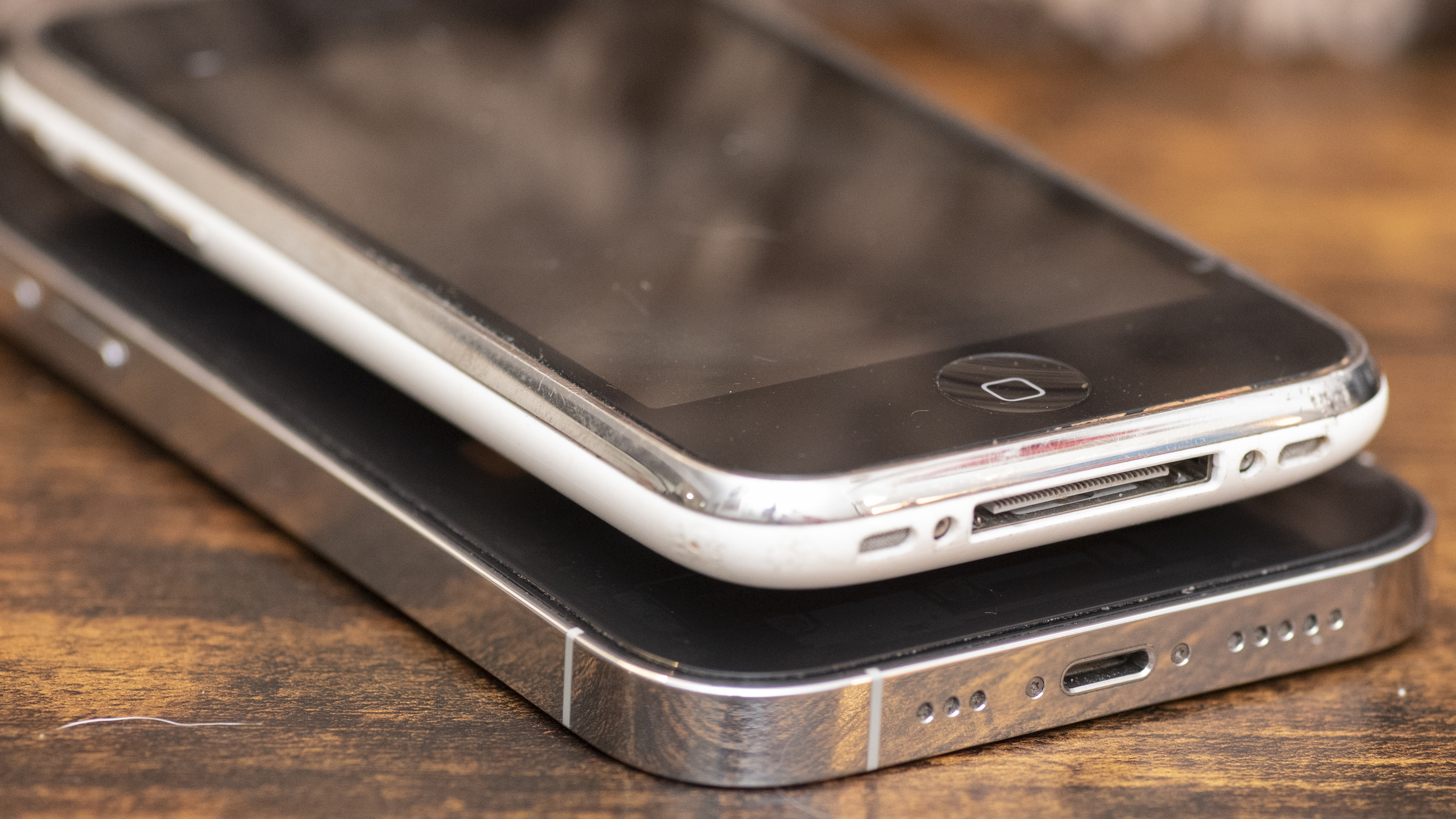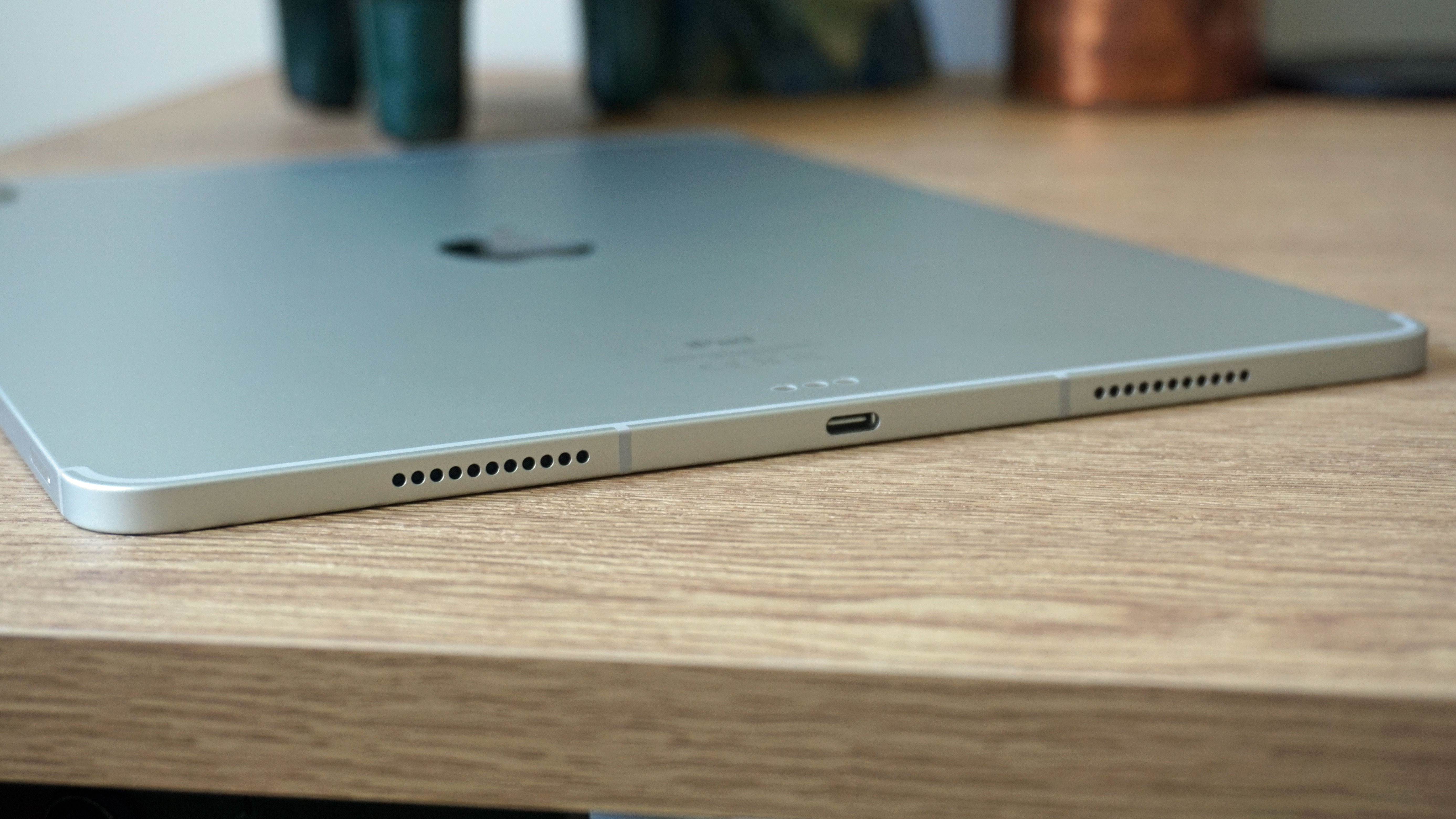Here's why the iPhone 15's USB-C port worries me
If it's already broke, don't break it

I hate proprietary ports like the iPhone’s Lightning. It adds cost and limits capabilities. The next iPhone 15 will likely finally ditch Apple’s proprietary port in favor of a USB-C design. That doesn’t mean it won’t stay locked down to Apple. I want to get excited about an iPhone 15 with USB-C, but I’m worried that Apple is going to leverage the switch to make money, and it may limit the new port’s capabilities anyway.
Lightning was cool before USB-C. When Lightning was introduced to the iPhone and Apple lineup, mini-USB and micro-USB ports dominated phones. These older USB port designs were terrible. If you plugged your cord in upside-down, an easy mistake on micro-USB, you could cause serious damage. I saw the carnage first hand from relatives who destroyed old Galaxy phones.

Along comes Apple Lightning in 2012. It isn’t any faster or more capable than USB 2.0, it just looks different. It fits perfectly, no matter which way you hold it. It’s easy to fit in the dark. It’s tiny, so it works with small devices like an iPod shuffle or a pair of earbuds.
We originally believed Apple was adding Lightning and removing the headphone port to make devices that were even smaller than the 3.5mm audio outlet allowed. We were fooled. Apple devices never got much thinner than the competition. In retrospect, it all seems like a money grab. We didn’t get thinner devices, we just got to buy all new stuff to go with our stuff.
There's a tiny chip inside that Lightning cable
A true Apple Lightning cable or accessory has something a generic USB cable does not. It has a microcontroller called an ‘integrated circuit’ that lets your iPhone or iPad verify that the accessory is certified by Apple. Theoretically, this means you won’t get low-quality junk devices that work improperly.
In practice, though, is this really a problem? I’ve purchased dozens of USB cables and accessories for my laptop, my Samsung Galaxy tablet, and my Android smartphones. I have keyboards, mice, memory card readers, dongle hubs, and adapters to work with Ethernet, HDMI, and even older Thunderbolt devices.
Nothing I own has ever caused a problem. Some of it works better than others. My Belkin hub works better than my Samsung, but you can’t tell me it’s because Samsung is an unreliable vendor. It’s a fluke of manufacturing or design, I’d guess. No need to lock down my phone against sub-par accessories.
Sign up for breaking news, reviews, opinion, top tech deals, and more.
Lightning was a great design, but it was never technically superior to USB, and it launched more than 10 years ago!
I don’t think Apple is really so concerned about malicious accessories or an experience that doesn’t live up to Apple’s standards. I don’t buy it. It seems like a money grab. Every integrated circuit needs to be licensed through Apple. You can currently find unlicensed Lightning gear, but if you buy something with an official Apple logo, you know that company paid Apple for the privilege.
What privilege, exactly? Lightning was a great design, but it was never technically superior to USB, and it launched more than 10 years ago! Since then, the USB-C port, with it’s USB 3.2 specification, has surpassed what micro-USB can handle. The Thunderbolt 4 standard, which uses the same USB-C pin design, is a huge leap beyond Lightning.
That’s why Apple’s best tablet, the iPad Pro, uses Thunderbolt 4 for its USB-C port. Developed in concert with Intel, Thunderbolt 4 is a desktop-level spec that offers amazing performance compared to basic USB-C, and it’s lightyears beyond Lightning.
The iPad Pro doesn’t get all of Thunderbolt 4’s capabilities, but it can do much more than your average smartphone. It can transfer data at 40 Gigabits/second. Compare that to the Lightning port on the iPhone 14 Pro that can only transfer video files at a slumberous 480Mb/s. The iPad Pro transfers more than 80 times faster!

The current iPhone can’t drive an external monitor, unlike smartphones (and iPads) with USB-C. The Galaxy S23 Ultra can run an external monitor at 4K resolution with a 60Hz refresh rate. The iPad Pro, which uses Thunderbolt 4, can even drive Apple’s 6K XDR Pro display at full resolution.
Even the less expensive iPad 10.9 (2022) can handle an external screen, with a 4K resolution up to 30Hz. Still, just because Apple’s USB-C tablets can handle a feature doesn’t mean Apple will include it on the upcoming iPhone 15.
Apple could ruin USB-C with an integrated circuit
Recent iPhone 15 USB-C rumors have suggested Apple will use a USB-C port, but the actual cables and accessories will need an integrated circuit microcontroller inside, similar to today’s Lightning limitations.
So far, we haven’t heard about any further lockdown of USB-C features, but why would Apple force accessory makers to include a controller chip if not to control the accessory makers? Obviously Apple doesn’t want to lose its proprietary Lightning licensing fees, but it could simply require accessory makers slap on some “Made for iPhone” badge and charge a fee for the logo.

Adding a hardware controller to USB-C cords and accessories is a way to control the capabilities of those devices. I would love to think this is only a security measure, to keep hackers from using USB-C as an easier way to gain access to my iPhone. The wealth of hacking tools already available says otherwise. Hackers gonna hack, end of story.
Will Apple allow more external storage features through USB-C? There are Lightning accessories that can read and interact with storage devices, but Apple’s own file system is relatively locked down, compared to what Android users may access.
My guess is that Apple will significantly lock down USB-C on the next iPhone. I would be surprised to see much more than basic accessory support, and I doubt the basic iPhone 15 will even be able to connect to an external monitor, though the Pro and Pro Max models should be a different story.
Everything I need from an iPhone 15 with USB-C
Here’s the bare minimum of what I need from USB-C on the next iPhone 15 and iPhone 15 Pro. I need to connect to a monitor, keyboard and mouse using a USB-C dongle. I’d love to check out some iPhone games on my computer screen, or watch movies using my iPhone accounts. I want to answer my personal email from my phone but make it feel like I’m using a real computer.
The next iPhone 15 Pro must enable much faster data transfer speeds, preferably up to 40Gb/s, like the iPad Pro, so that I can transfer all of my big RAW image files to my computer in seconds. The Lightning port takes around two minutes to transfer 100 photos. A Thunderbolt 4 port could accomplish the same in three seconds.

It’s a longshot, but I’d also love faster charging. The Thunderbolt 4 standard can handle up to 100W of power. That’s enough power to combine the power cable and video cable for an external monitor into one Thunderbolt 4 cord.
Right now, even the iPad Pro, with it’s Thunderbolt 4 capabilities, cannot charge faster than 30W, which is still better than an iPhone. I’d love to see Apple at least match the 45W performance Samsung is getting from USB-C, if not Thunderbolt’s mad power.
Most importantly, whatever Apple does with USB-C, it needs to step back and ask if these changes are good for its users. Will USB-C make iPhone ownership more affordable and accessible for all? Will it make accessories easier to find and more compatible to use? If not, Apple needs to abandon whatever plans get in the way. The ‘C’ in Apple’s USB-C cannot stand for ‘Control.’

Starting more than 20 years ago at eTown.com. Philip Berne has written for Engadget, The Verge, PC Mag, Digital Trends, Slashgear, TechRadar, AndroidCentral, and was Editor-in-Chief of the sadly-defunct infoSync. Phil holds an entirely useful M.A. in Cultural Theory from Carnegie Mellon University. He sang in numerous college a cappella groups.
Phil did a stint at Samsung Mobile, leading reviews for the PR team and writing crisis communications until he left in 2017. He worked at an Apple Store near Boston, MA, at the height of iPod popularity. Phil is certified in Google AI Essentials. His passion is the democratizing power of mobile technology. Before AI came along he was totally sure the next big thing would be something we wear on our faces.